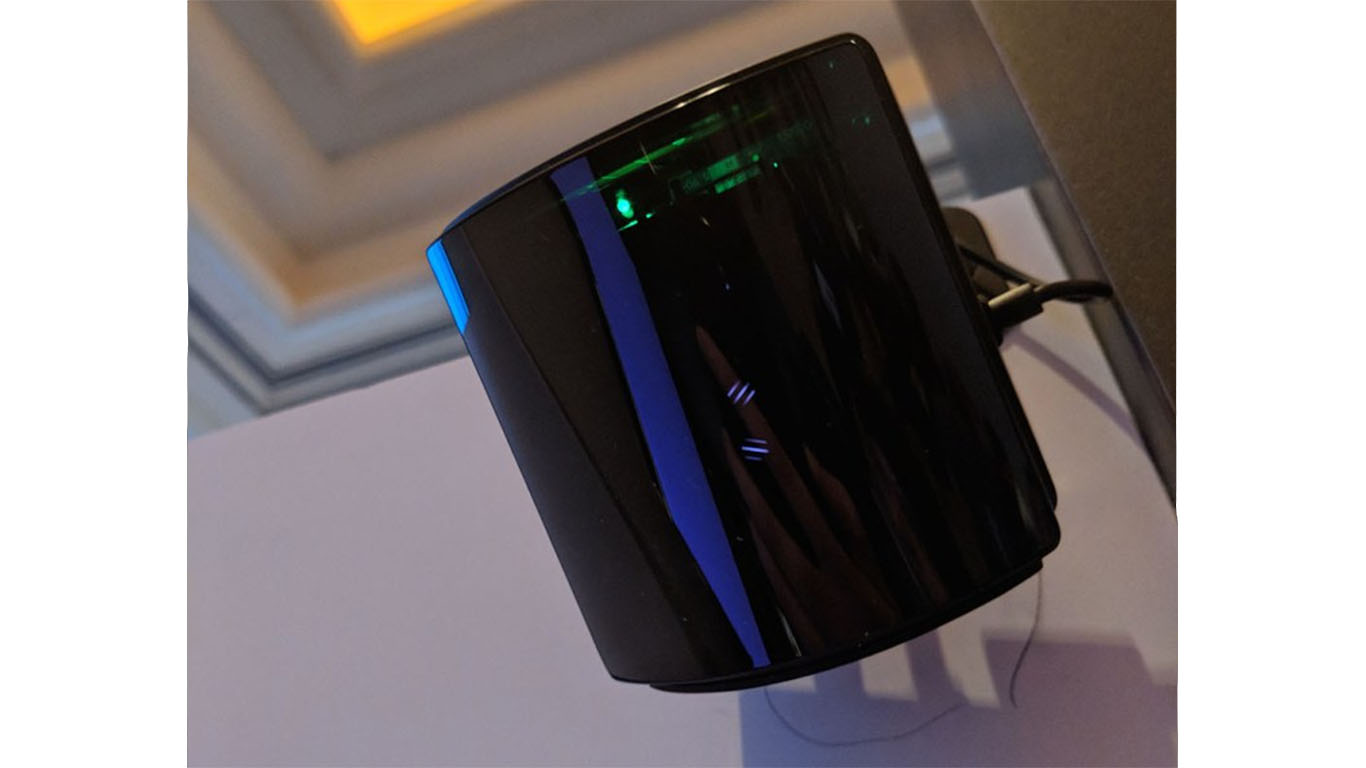Some photos of the SteamVR 2.0 base stations taken from their FCC filing
Since the first time we’ve heard about SteamVR tracking 2.0, we all want to play a bit with it, since it offers a lot of interesting improvements over its 1.0 counterpart, like:
- Reduced price of the tracking solution;
- Improved robustness against interferences;
- Possibility to use more than 2 base stations, so it is possible to enlarge the tracking area (that for instance becomes 10m*10m with 4 base stations) and to let people put different Vive installations inside the same room (currently you have to use separators, as I explain in this other article);
We know that the new headsets based on SteamVR tracking, like the Vive Pro and Pimax 8K, will use this technology and at CES 2018 we had the opportunity to have a glimpse of the new 2.0 base stations. But of course we want to know more.
And today we do: VR innovator Enrico Speranza sent me a link to the FCC approval of the 2.0 Lighthouse stations (FCC ID: 2AES41004), so we can access all the data contained in it, like some technical info and a lot of photos about the new devices. On February, 1st it has expired the short-term NDA on the photos of the device and other specifications, so we now have real access to almost everything (I have to say that some links are still missing).
I had a look at these documents and I want to share with you some random info and images, advising you to have a look yourself to all the photos and the documents directly on FCC website.
First of all, the base stations work at 12V, 833mA and operate with a Bluetooth frequency of 2402-2450MHz. I know you all were curious about this data, so I made sure to write it in this article so that you can sleep better tonight.
Then there is the user manual, that it is very short: it just points to a website from Valve “http://steamcommunity.com/vrhwlab” that currently does not exist. What is interesting is noticing that also this time Valve will give you the base stations along with the wall mounts, so that you can attach them safely inside your room.


In the filing, there are some photos of the outside of the stations, both from the front and from the back. Thanks to a ruler, you can also get an idea of the dimension of these devices.


In my opinion, the photos of the interior are more fascinating. There you can see where are the Bluetooth antenna (Bluetooth is needed for instance to connect the Lighthouses to your phone or your PC so that you can use your Vive App for some diagnostic stuff) and the motor. Inside the box, there are really few things: the motor (only one, thanks to the new laser technology), the antenna and an electronic card. The fewer things, the cheaper the set… that’s why SteamVR 2 tracking technology is so cheap!



There are still some links in the FCC file that we can’t see, like the Technical Description of the devices, but we’ll see them in the future for sure. Anyway, we’ll be able to see and use the stations by ourselves when in Q2 2018 the Vive Pro will ship to our houses. The fact that these devices have been approved by FCC is a good sign that things are going smoothly and according to Valve’s timetable.
I hope you liked this short news of today… I saw these photos and thought they were worth sharing with you. If you enjoyed watching them, share it with your friends and subscribe to my newsletter for more VR-related content!
Disclaimer: this blog contains advertisement and affiliate links to sustain itself. If you click on an affiliate link, I'll be very happy because I'll earn a small commission on your purchase. You can find my boring full disclosure here.




Loving the new curved design and the Steam logo at the top! <3 (the previous one have the HTC logo if my memory serves me well). Anyway, I'm still wondering how the hell that single motor can emit IR lasers in both horizontal and vertical directions. By the way, the emitters can be seen in the pictures? Couldn't find them anywhere…
The emitter should be that hole on the motor that you can see in the first photo of the interior of the devices! This is one of the two emitters. Regarding the first question and looking at the picture, it may be that they don’t throw horizontal and vertical lasers, but they throw 45° inclined lasers, that are perpendicular between them (+45°, -45°). This way you can use a single motor.
exactly, i cant think why they went with two motors for the first design. i guess there must have been a reason why they had to go with that. unless it really was just no one realised the design could be simpler.
Maybe so that they could make it cheaper later and make the news 😀
I don’t know, I’m learning that VR currently is full of compromises. Maybe the two motor solution offered more accuracy at that time, maybe the supplier for the pieces of the one motor solution couldn’t supply them enough… who knows